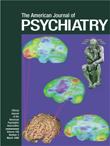This volume, based in part on the lectures given at the International Symposium for the Psychotherapy of Schizophrenia held in Washington, D.C., in June 1994, consists of eight chapters produced by four American, one German, and two Finnish psychoanalysts.
There are three reasons the book is of interest and may represent a useful reading. The first is that it provides a timely summary and integration of psychoanalytic contributions to the study of schizophrenia. The main message it conveys is that adult prototypical schizophrenia occurs in individuals who carry a psychotic “seed” called “the infantile psychotic self,” which is formed in the early interaction of mother and child or through marked regression in the developmental years. This “seed” is enveloped by a healthier self, and adult schizophrenia is initiated when the encapsulated psychotic core can no longer be effectively controlled by the ego mechanisms associated with the healthier self. The formation of a “seed of madness” does not necessarily lead to schizophrenia, since this seed may become “calcified” or be partially encapsulated, so that the person may seem normal at one level of functioning but have a secret life dominated by fusion-defusion and/or introjective-projective cycles. On the other hand, even in prototypical schizophrenia, some aspects of the healthier self are retained.
Of course, the authors are aware that these views are not new, and the contributions by Fenichel, Bion, Winnicott, Mahler, Pao, Kernberg, Rosenfeld, and several others are acknowledged and briefly discussed. The synthesis may be useful to readers, although one would have appreciated a more detailed description of how the psychotic seed develops and manifests itself before the onset of schizophrenia.
The second reason the book is of interest is that it nicely reflects the current attention of part of the psychoanalytic movement to the progress of neurosciences. Vamik Volkan, in his introductory piece, mentions “genetic (biological) determinants” as first in the list of what “passes through the channel” of early mother-child experiences, and Salman Akhtar, in his concluding essay, lists “heredity and constitutional factors” as first among the “constituents of the psychotic core.” Some hints are also given at how biological and psychological determinants may relate to each other, as when the hypothesis is put forward that “a certain weakness of attachment to objects, a tendency to react to frustrations with the loss of objective relationships and by turning away from the outside world, might be genetically determined.” However, these hints remain somewhat generic, and one would have liked to see specific references to the current dialogue between psychoanalysis and neurosciences, as well as to the recent literature about the biological correlates of schizotypy.
The third reason the book is interesting is that it illustrates the persisting difficulty psychoanalysts have in realizing how important it is to provide the empirical basis of any statement concerning the determinants of mental disorders. Most readers will certainly acknowledge that “mother’s and child’s unconscious fantasies” will remain “not subject to measurable research,” but many of them would have probably liked to know more about the “intensive work for over thirty years with several regressed or underdeveloped patients, including individuals with schizophrenia” on which Volkan founds the valuable theories put forward in his chapter.
In conclusion, the book provides a nice picture of the status of psychoanalytic investigation of schizophrenia circa 1994, with its persisting fascination and weaknesses. No doubt the reader will predominantly appreciate the former or the latter, depending on his or her “multidetermined” disposition.

